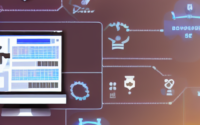PC Streaming and Content Creation Setup
PC Streaming and Content Creation Setup
Introduction
In today’s digital era, content creation and live streaming have become increasingly popular. Whether you are an aspiring streamer or a creative individual looking to showcase your talent, having a well-equipped PC streaming and content creation setup is crucial. This guide will walk you through the essential components and steps to create a powerful and efficient setup for your streaming and content creation needs.
1. Hardware Requirements
To have a smooth streaming and content creation experience, it’s important to have a reliable and capable hardware setup. Here are the main components you should consider:
1.1 Processor (CPU): Look for a multi-core processor, such as an Intel Core i7 or AMD Ryzen processor, which can handle the demands of both gaming and streaming simultaneously.
1.2 Graphics Card (GPU): Invest in a powerful GPU like NVIDIA GeForce or AMD Radeon to ensure smooth rendering and encoding of high-quality graphics.
1.3 RAM: A minimum of 16GB RAM is recommended to handle multitasking and run resource-intensive software smoothly.
1.4 Storage: Opt for a fast and spacious SSD (Solid State Drive) for your operating system and software, coupled with a high-capacity HDD (Hard Disk Drive) for storing large files and recordings.
1.5 Capture Card (optional): If you plan to stream console gameplay, consider a capture card that allows you to capture and stream footage from your gaming console to your PC.
1.6 Audio Setup: Invest in a good quality microphone and headphones to ensure clear voice recording and monitoring.
2. Software Requirements
Besides the hardware, you’ll need reliable software to enhance your streaming and content creation experience. Here are some essential software requirements:
2.1 Streaming Software: Choose a popular streaming software like OBS (Open Broadcaster Software), Streamlabs OBS, or XSplit, which offer a range of features for streaming, including scene setup, overlays, and chat integration.
2.2 Video Editing Software: Consider software like Adobe Premiere Pro, Final Cut Pro, or DaVinci Resolve for editing your recorded content, adding effects, transitions, and making your videos visually appealing.
2.3 Graphics Design Software: Applications like Adobe Photoshop or Canva can be used to create custom overlays, logos, banners, and thumbnails for your streams and videos.
2.4 Communication Software: Install communication software like Discord or TeamSpeak to interact with your audience, collaborate with other content creators, and manage your community.
2.5 Antivirus Software: Protect your PC and data with a reliable antivirus program to ensure security while browsing and downloading various files.
3. Peripherals and Accessories
Apart from the core components, there are various peripherals and accessories that can enhance your streaming and content creation setup. Consider the following:
3.1 Webcam: Invest in a good quality webcam to enable face cam streaming, providing a more personal touch to your live streams and videos.
3.2 Lighting: Proper lighting is essential for clear and professional-looking streams and videos. Consider using a ring light or softbox lighting kit to illuminate your face or recording area evenly.
3.3 Microphone Arm and Pop Filter: To improve audio quality, use a microphone arm or boom arm to position your microphone closer to your mouth. Additionally, a pop filter can reduce plosive sounds and improve vocal clarity.
3.4 Green Screen: Using a green screen allows you to replace the background behind you with images or videos of your choice, providing a more dynamic and immersive experience for your viewers.
3.5 Dual Monitors: Having dual monitors can significantly enhance your workflow by allowing you to multitask, manage chat windows, monitor analytics, and keep an eye on your stream, all without interrupting your content creation process.
4. Internet Connection
A stable and high-speed internet connection is vital for seamless streaming and content uploading. Consider the following tips:
4.1 Internet Speed: Aim for an internet plan with a high upload speed (at least 10 Mbps or higher), as streaming and uploading content requires significant bandwidth.
4.2 Wired Connection: Whenever possible, use an Ethernet connection instead of relying on Wi-Fi. A wired connection generally offers more stability and reduces the chances of network interruptions.
4.3 Router Placement: Position your router in a central location, away from physical obstructions, to ensure wider coverage and a stronger signal throughout your home.
4.4 Bandwidth Management: Prioritize your streaming software and content creation applications on your network to minimize lag and prevent buffering during your live streams.
4.5 Stream Testing: Before going live, always perform test streams with different bitrate settings to ensure your internet connection can handle the selected settings without issues.
5. Setup and Optimization
Once you have all the necessary components, it’s essential to set up and optimize your PC streaming and content creation setup. Follow these steps:
5.1 Clean Installation: Start with a clean installation of your operating system to ensure optimal performance and minimize potential software conflicts.
5.2 Drivers and Updates: Update your graphics card drivers, streaming software, and other essential applications to their latest versions to benefit from bug fixes and performance improvements.
5.3 Stream Settings: Configure your streaming software settings, including resolution, bitrate, and the streaming platform you’ll be using. Optimal settings depend on your internet speed and the platform’s recommended settings.
5.4 Scene Setup: Create scenes within your streaming software for different content variations, such as a gaming scene, chatting scene, or a full-screen display for sharing videos or presentations.
5.5 Test and Adjust: Perform test streams or record short clips to ensure all your settings, audio levels, and overlays are functioning as intended. Adjust settings and make necessary tweaks based on your test results.
5.6 Backup and Organization: Regularly back up your recorded content, overlays, and scenes to prevent data loss. Keep your files organized with a suitable folder structure for easy access and management.
Conclusion
Building a powerful and efficient PC streaming and content creation setup is essential for aspiring streamers and content creators to deliver high-quality live streams and captivating content. By carefully considering the hardware, software, peripherals, and internet connection, as well as setting up and optimizing your system, you can create a professional and engaging streaming experience for your audience.


